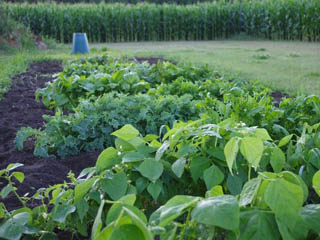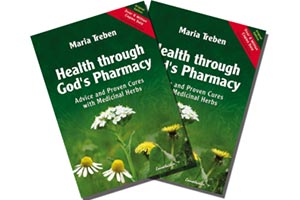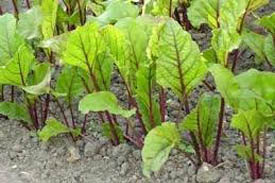Planning and Planting: Fall Gardening Muse
 The Garden season is not over just because summer has started. Now is the time to start thinking about planting for fall and winter, which will increase your yield considerably. Gardening is a year round profitable hobby. Envision the cold miserable winter and being cuddled next to the wood stove while the aroma of fresh soups, stews, pumpkin pies, parsnips fried up with your own honeybee shares, rutabaga, mustard and turnips, Idaho baked potatoes, and of course fresh baked bread all prepared by your wife’s’ loving hands while you sit back and rub the dogs ears contemplating lofty thoughts about old Mossy Horns.
The Garden season is not over just because summer has started. Now is the time to start thinking about planting for fall and winter, which will increase your yield considerably. Gardening is a year round profitable hobby. Envision the cold miserable winter and being cuddled next to the wood stove while the aroma of fresh soups, stews, pumpkin pies, parsnips fried up with your own honeybee shares, rutabaga, mustard and turnips, Idaho baked potatoes, and of course fresh baked bread all prepared by your wife’s’ loving hands while you sit back and rub the dogs ears contemplating lofty thoughts about old Mossy Horns.
Yes, it is time to drag out the fall planting catalogs you are receiving in the mail and identify specific fall recommended plants. You can start many plants right now in your seed starting trays and before September be setting out new plants that have already been drawn up leaving you new space.
Potatoes are starting to flower for many folk and when they flower they are expanding. Time to water them. Once the vines die back you can harvest anytime after a couple of weeks to harden the skins. The longer they are in the ground the tougher they get and some varieties a bit mealy, but still edible and delicious.
Your strawberries ought to be perky and bushed up like a cantaloupe by now. The runners going out are the daughter plants; train them to fill in the gaps between plants. Each daughter plant will become a mother plant and also send out more daughters. Keep up the weekly watering schedule. These plants will provide a sample of what next year will bring.
Tomatoes are the favorite-some varieties are flowering and making small tomatoes that will quickly grow bigger. The carrots you planted under the tomatoes are about six inches high now and soon will require thinning-the hardest part for me as I do not like to disturb the plants but it is necessary to have a couple of inches between the carrots to have growth for the table. The thinning can be eaten, or fed to your rabbits.
Remember many plants such as beets, and dribbled seed types will require thinking. Beets are a favorite of mine as the tops are nutritious and mixed with other greens, raw or cooked.
Pumpkins and winter squash need to be started now with a liberal sprinkle of bone meal and try to separate varieties, or only grow one variety, as they will cross. Water frequently when forming and pinch off to one or the most two pumpkins per vine for maximum size.
On a serious note because of the noted worldwide food shortages suddenly arising, USA stores cutting back inventory, farmers growing for ethanol, grain reserves vanishing by questionable USDA political interests, seed growers unable to keep up with demand and the Government buying up #10 cans of Food from the “survival food stores suppliers” gives rise that this PHASE of Back2theLand basic gardening introduction is coming to an end.
I believe it is now time to start thinking of serious self-sufficiency if you have a plot of land. To this end the next several articles will shift into raising rabbits, chickens and goats-successfully for food and fertilizer.
Following the rabbit introduction we will shift to building garden bed hoop houses as an interim for extended seasonal growth with an understanding of water management and how to build an all organic growing bed which will be the wave of the future since commercial fertilizer is costly and becoming scarce, especially phosphorus.
Ultimately we will build solar greenhouses that work for you, Austrian Bee Houses for those interested in honeybees, the root cellar, and a host of Back2theLand-modernized concepts.
I regret we do not have enough space but as usual I will refer you to those sources that are on track with the same idea.
Having tailgated the Great Depression and on through the wars and recessions I find the current deterioration of the world situation, emerging since 2001, as damn scary. Perhaps it is my age but I weep for those unfortunates who are suffering.
Copyright 2008, Back2the Land, Mark Steel



